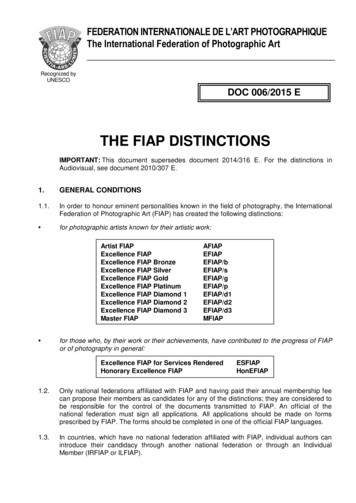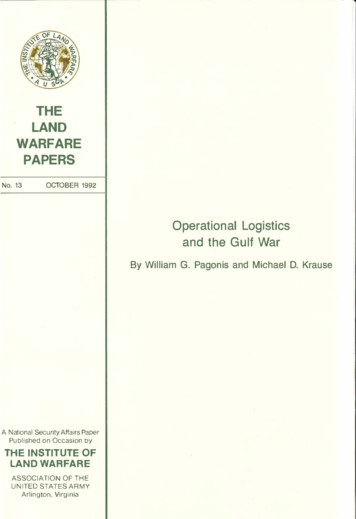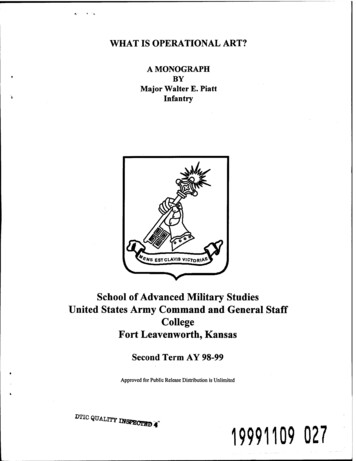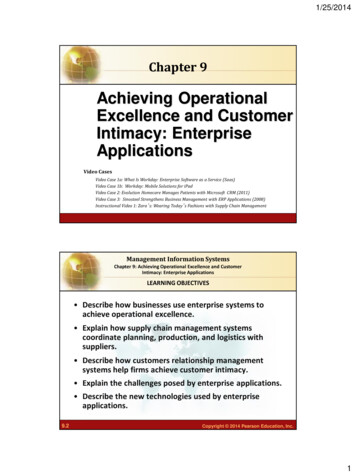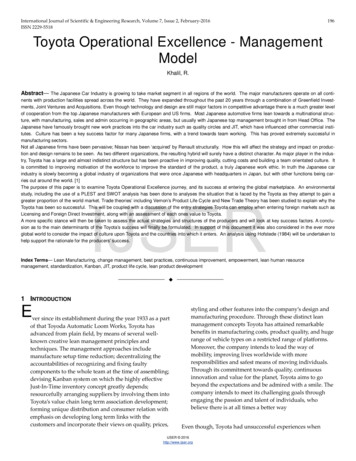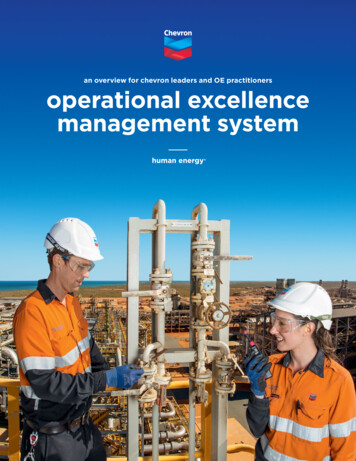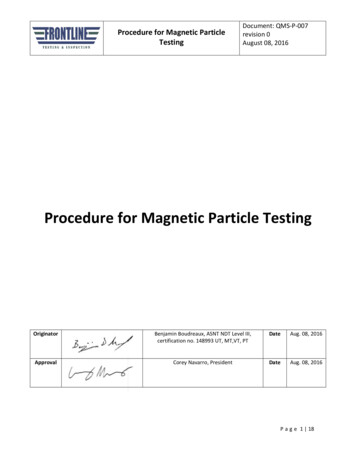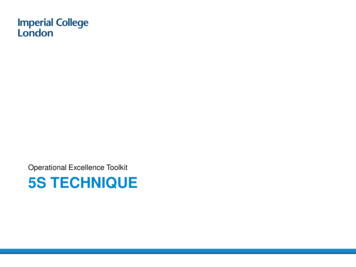
Transcription
Operational Excellence Toolkit5S TECHNIQUE
5S - One page lessonDescription: Workplace Organisation (5S) is a management philosophy for creating and maintaining a highly effective, high-performanceworkplace. It is often used as an enabling mechanism for continuous improvement.15Sustain Define roles and responsibilities Create a schedule to testworkplace against the 5Sstandard Encourage further improvement4Sort Clear out cupboards, desks andshared spaces Archive rarely used items “Red Tag” unwanted items Recycle where possible Retain only what is neededStandardise Create record of the newworkplace standard Use visual indicators Improve signage Colour coding to delineate work32Straighten Put frequently used items closeat hand Ensure storage is appropriatelysized Replace broken items Arrange desks Label and organise cupboardsShine Thoroughly clean the workplaceincluding shared spaces Dispose of unwanted “Red Tag”itemsBenefit: Streamlined workplace, increased efficiency, improved skills transfer and minimised waste. Serves as a simple technique to quicklyidentify opportunities in any area independent of formal projects or improvement efforts. The 5s technique can be applied to both physicalwork areas and electronic work spaces (email, folders, shared drives etc.)
5S - “How to”PurposeTo ensure that teams have theequipment and resources closeto hand that enable them to workas effectively as possibleWhen To Use As part of the deployment ofOperational Management To ensure that teamsminimise the amount of timewasted searching forequipment, documents orinformation When space is at a premiumand there is a need tomaximise utilisation andminimise waste of resourcesOutput A safer, more professional,better organised workenvironment. A more pleasant environmentfor employees More effective and flexibleutilisation of spaceSteps1. Make an initial assessment of the workplace and identifyopportunities2. Talk to managers and staff to gauge their appetite forchange, needs and concerns3. Brief the team on the 5S principles and approach4. Take team members and managers to see otherenvironments that have adopted 5S principles (e.g. Library)5. Organise an initial day to sort the work environment – makethe day as fun and interactive as possible and encourageeveryone to join in (especially senior managers)6. Think about both the physical workplace and electronicstorage7. Create a “red tag” area to store items that are not required8. Engage with facilities to ensure that there are adequate binsand recycling facilities - try to recycle and reuse as much aspossible9. Work with the team to define new standards for theworkplace10. Create visual reminders to help the team remember whathas been agreed11. Encourage everyone to address issues when they see themand not wait to be told12. Document the standard and create a checklist13. Conduct periodic reviews to highlight opportunities forimprovement14. Ask the team to think about other applications (e.g. emailinboxes) and improvements15. Encourage senior managers to role model the newbehaviours and standards
5S - examplesShared areas tidied .Cluttered desks organised .Corridors cleared .Storage freed up .
5S example : Desk Visual StandardNothing above the baffle boardAll pending workin desk traysUp to 2 personalphoto’sStationery andpersonal effectsstored in PedestalClear desk at endof working dayUp to 5 smallornamentsNothing storedunder deskTeam defined and agreed Desk Standard – Professional but personal
5S example: Sustain ChecklistWORKPLACE ORGANISATION CHECKLISTDepartmentDateReviewerThe team’s purpose, work and performanceis clearly visible. Confidential items arelocked awayWorkCheckIs the name / function of the team clearly displayed?Is team performance clearly visible and up to date?Is pending work clearly labelled and organised?Is a clear desk observed at the end of the day?Are confidential items locked away?Desks follow an agreed standard and teammembers have the equipment they need towork effectivelyDesksIs the Desk Standard documented and visible?Do team members desks follow the standardIs all equipment in a good working state?StorageAre the contents of cupboards clearly labelled?Are the interiors of cupboards tidy?There is sufficient storage and it is usedappropriatelyIs the space used appropriately?Are the tops of cupboards / window cills free from clutterPrint rooms are tidy and equipment is fullyfunctionalThe work space is clean, free of safetyhazards and comfortablePrint areasAre print areas tidy?Is the equipment working?Is stock managed appropriately?Health,Are the corridors and passageways free from rubbish?Safety &Environment Is it easy to identify the Manager / Supervisors?Are carpets are furnishings clean?Are lights / heating working correctlyAre there sufficient bins and recylcing facilities?Meeting rooms are tidy and have fullyworking equipmentMeetingspaceIs the equipment in good working orderAre there sufficienct chairs?Are meeting rooms free from clutterY/NComments / Actions
5S - Best practice tips1Team should create a statementof aims before commencing theexerciseLook at ways to reduce amountof paper generated in the firstplaceEngage with Estates to makesure any rubbish is upliftedquicklyEngage cleaning staff to borrowequipmentNominate a champion for eachteam involvedWorkspace is very personal andsome people need time to adjustNeed to be mindful of peoplewho’s workspace has beenadjusted by Occupational HealthLook at reducing the number ofprintersMultiple teams working togetheris a bonding experience2 full days of activitySet aside a “Room of nonrequirements” to place unwanteditemsLook at centralising stationarystorage and ordering1From Library 5S exercise June 2014
5S - One page lesson Description: Workplace Organisation (5S) is a management philosophy for creating and maintaining a highly effective, high-performance workplace. It is often used as an enabling mechanism for continuous improvement. Benefit: Streamlined workplace, increased efficiency, improved skills transfer an
